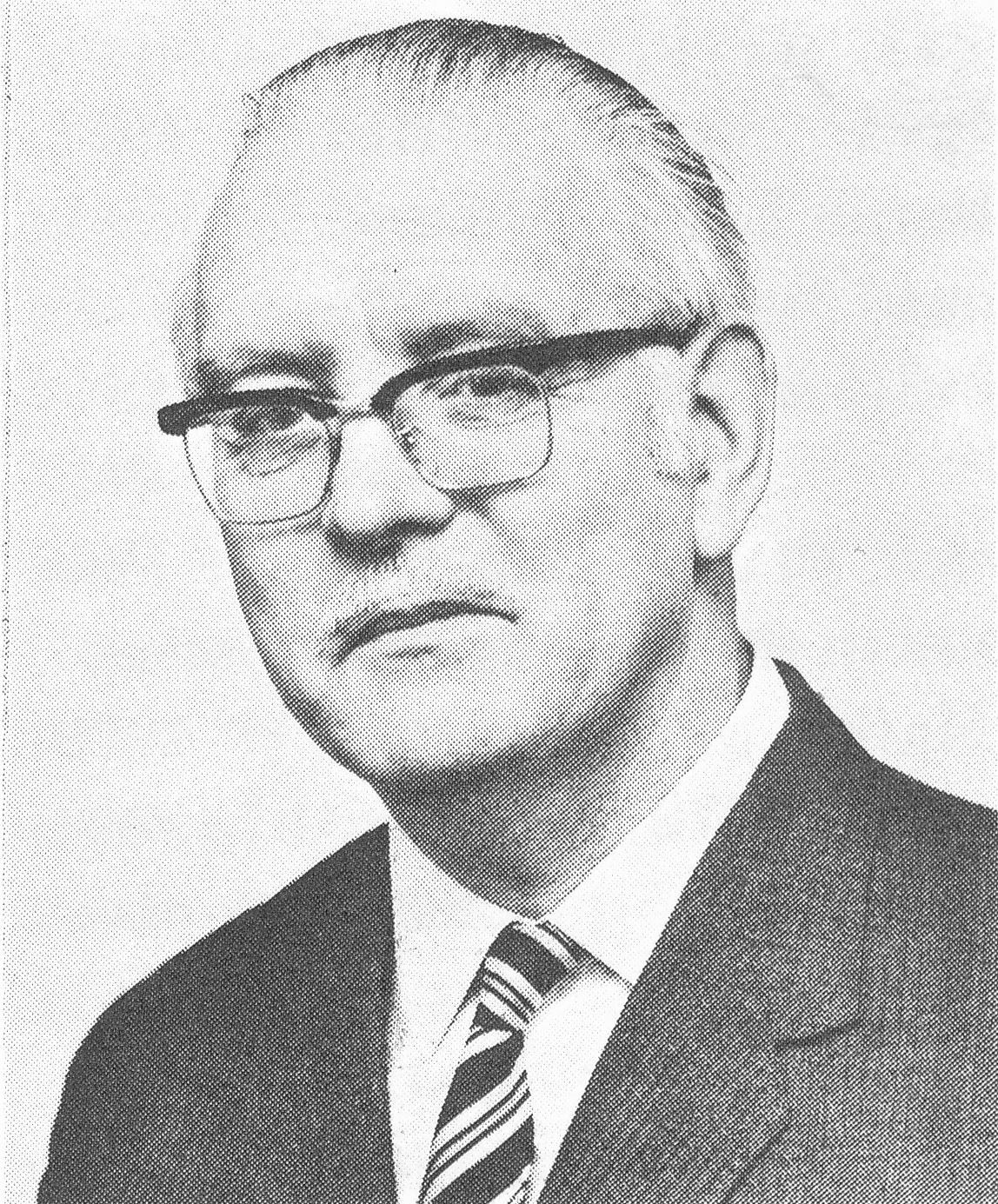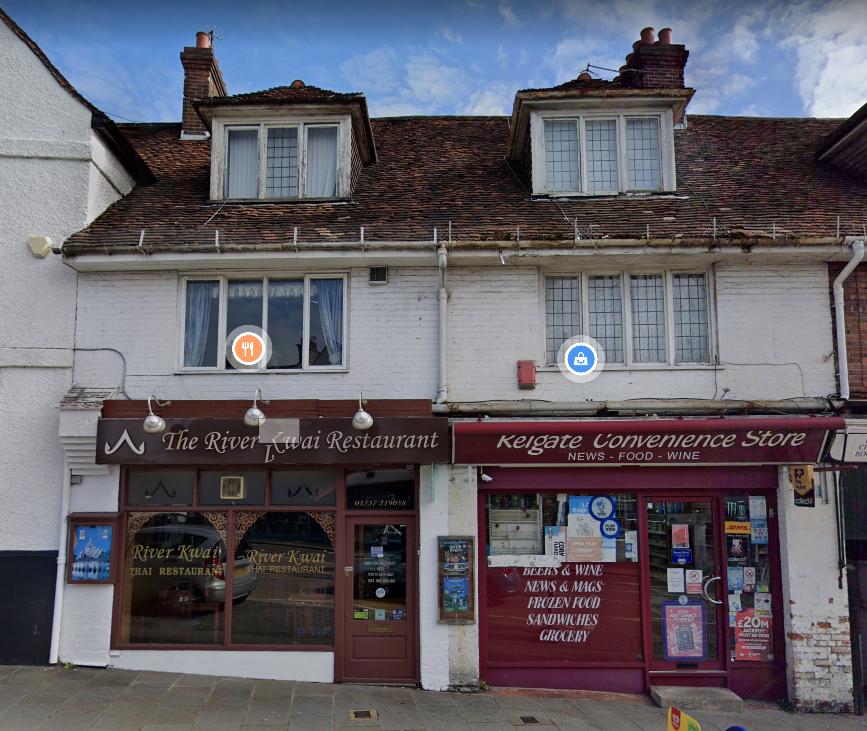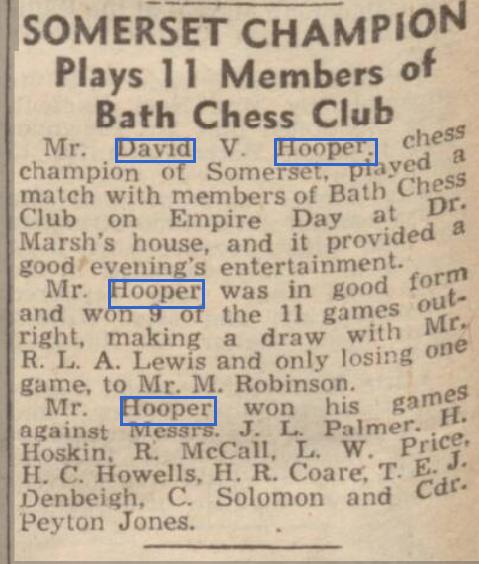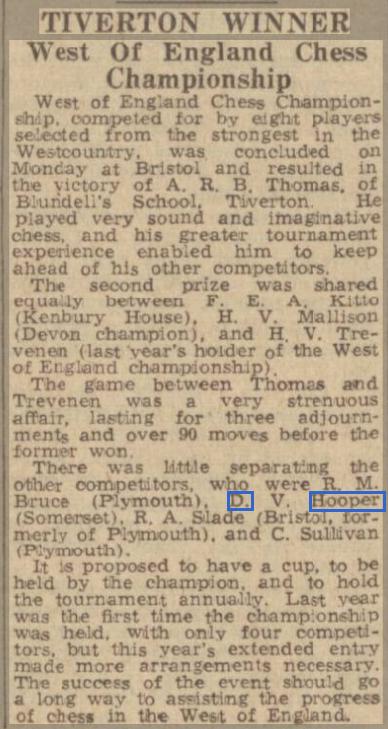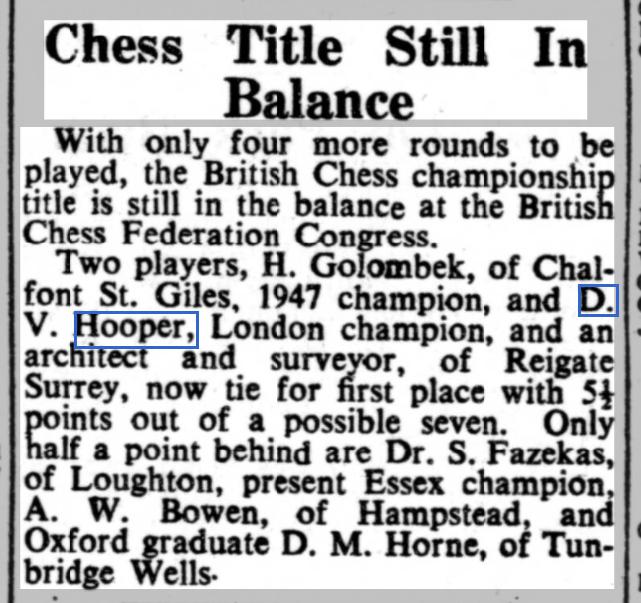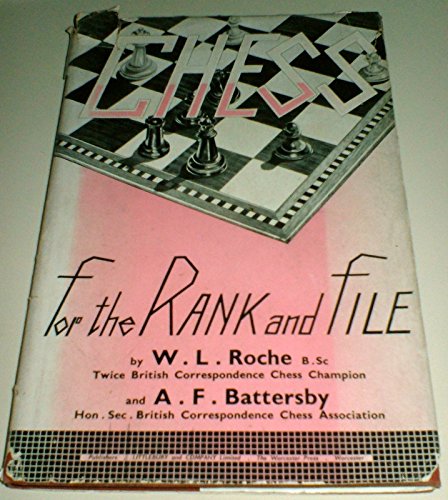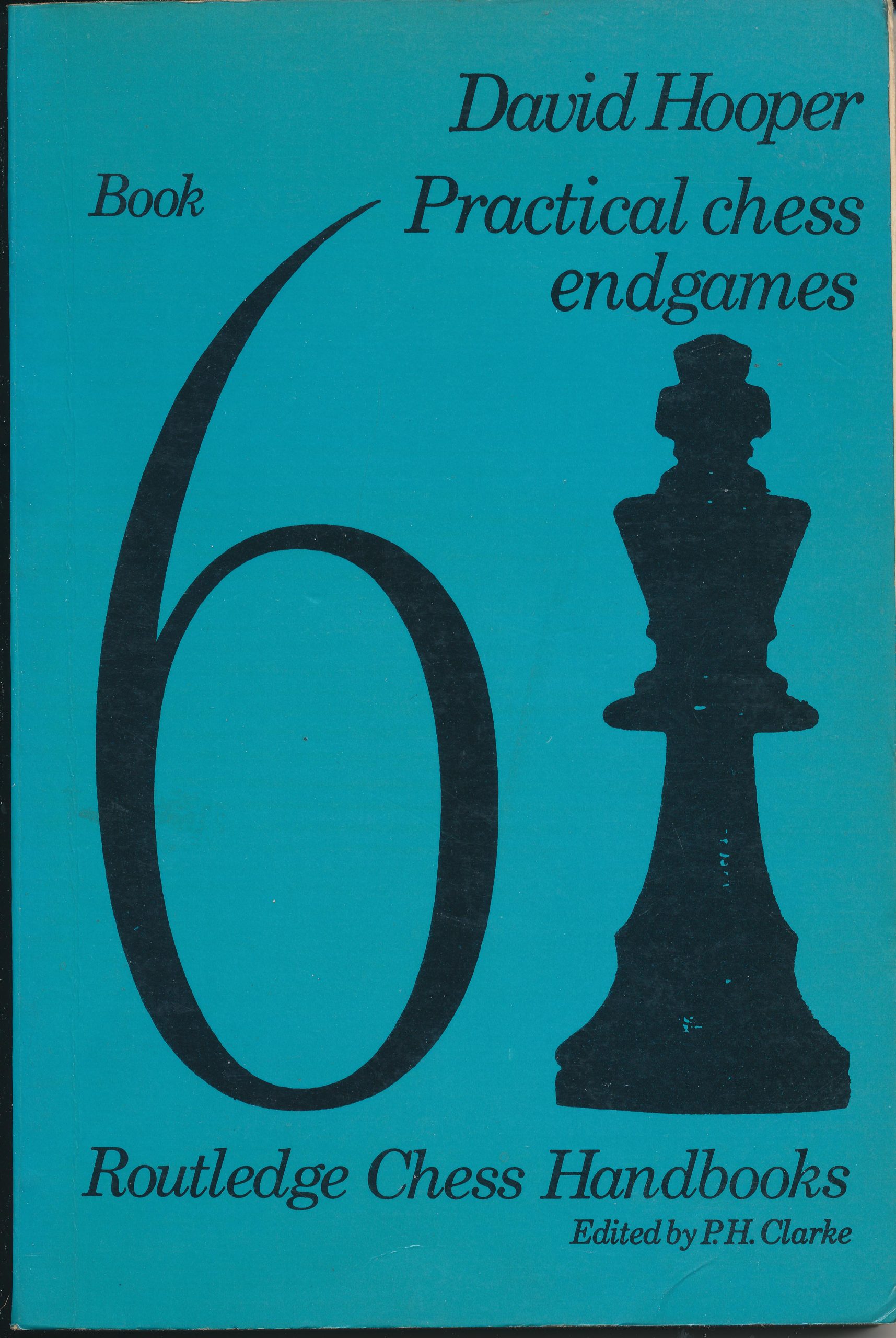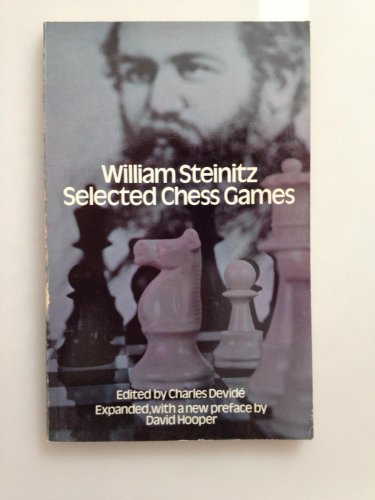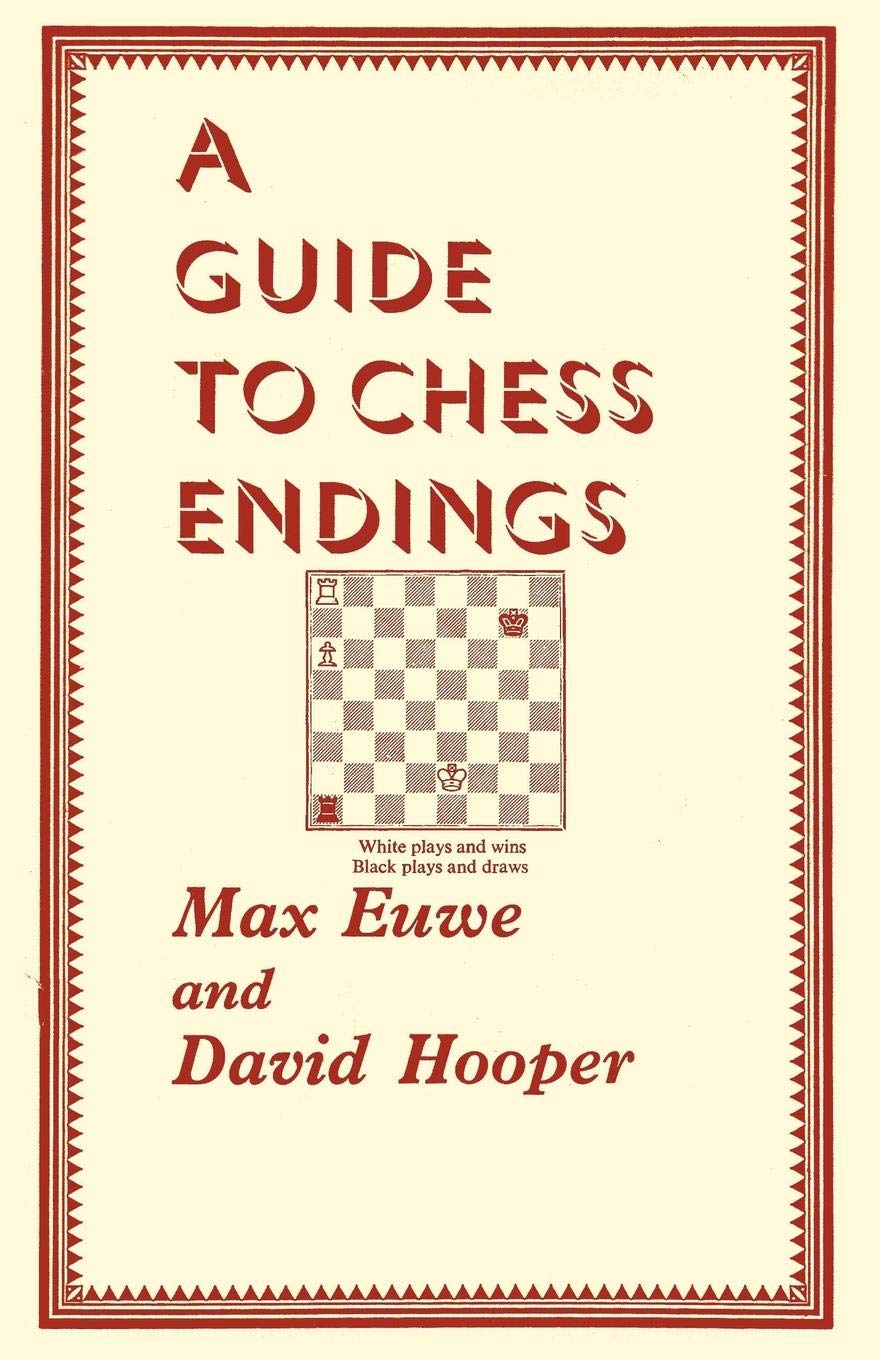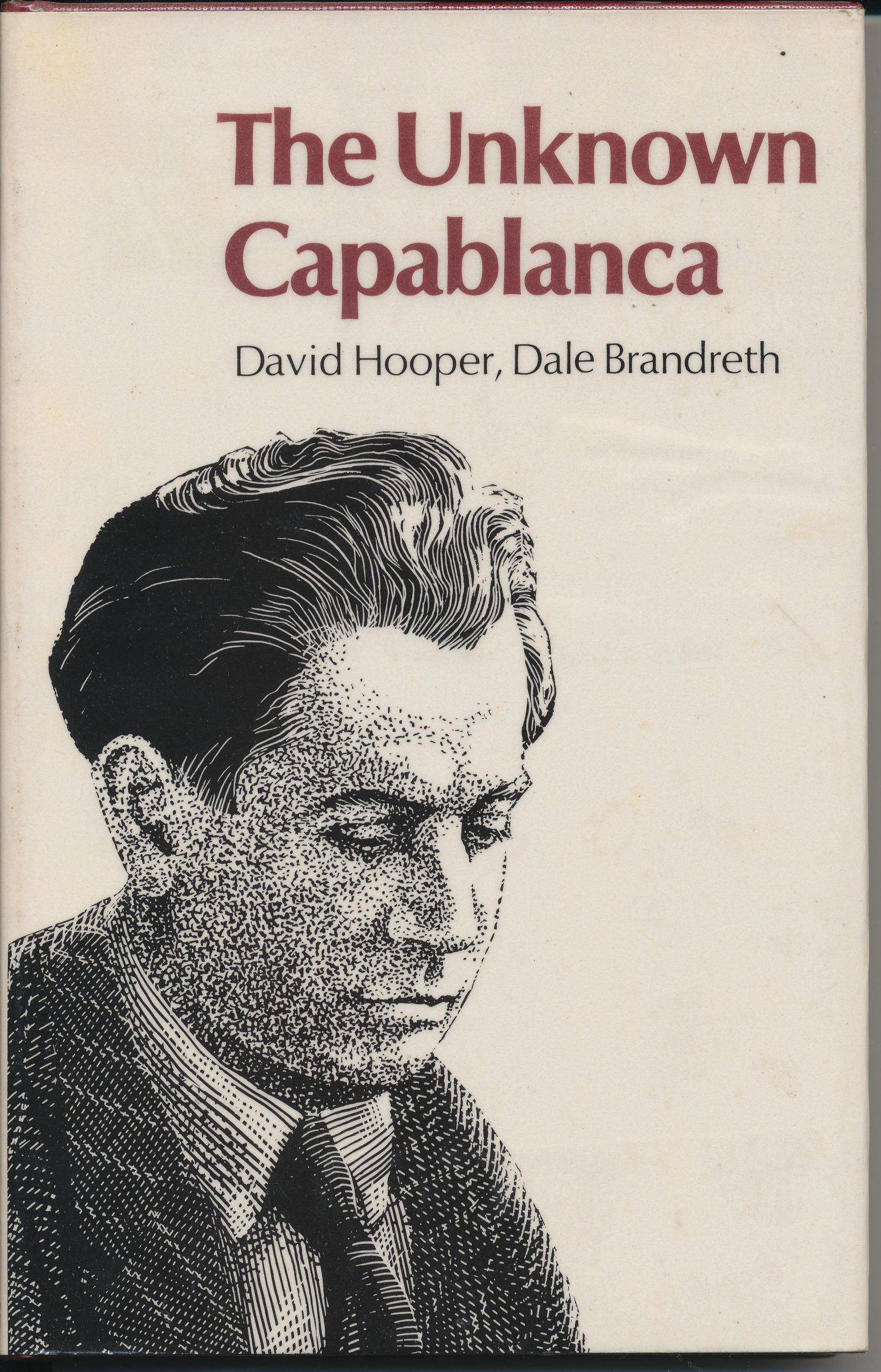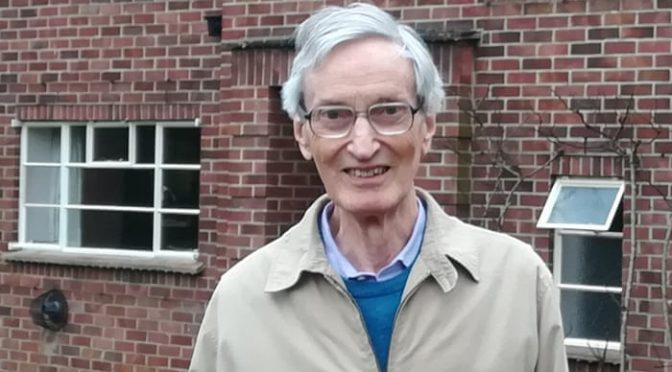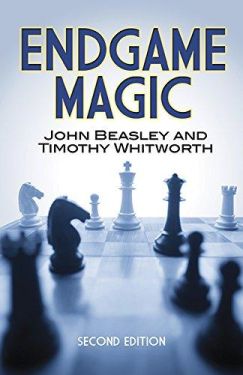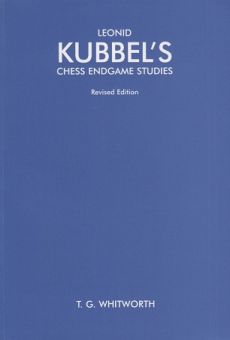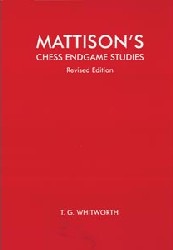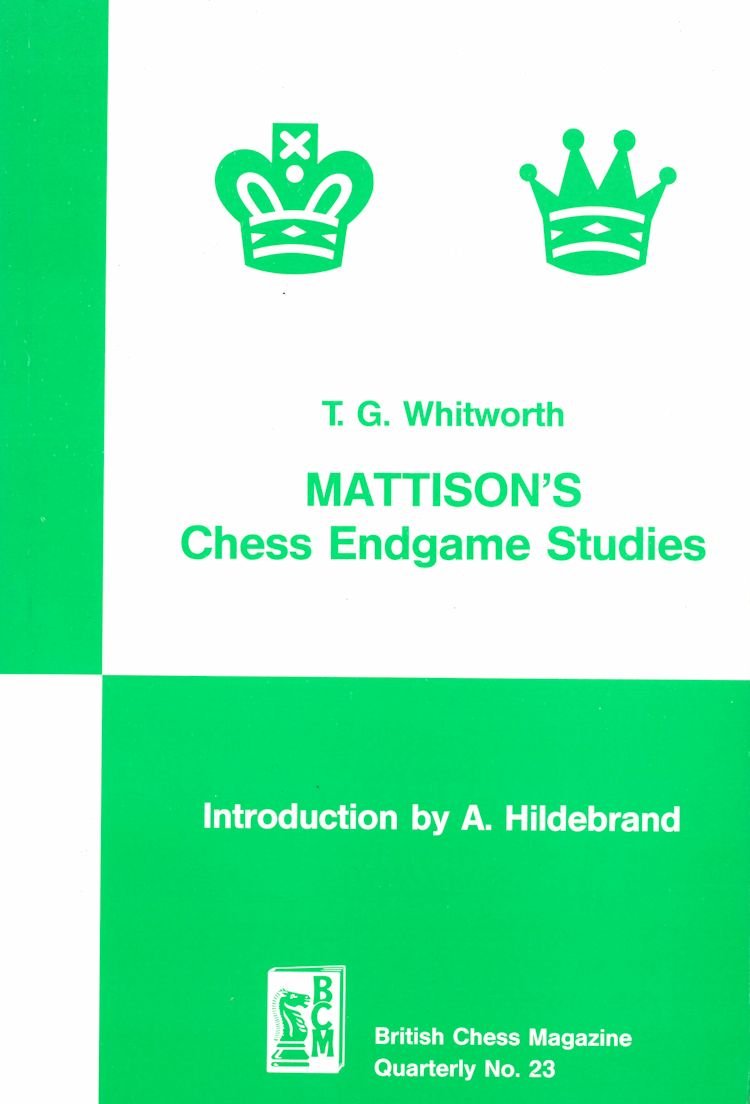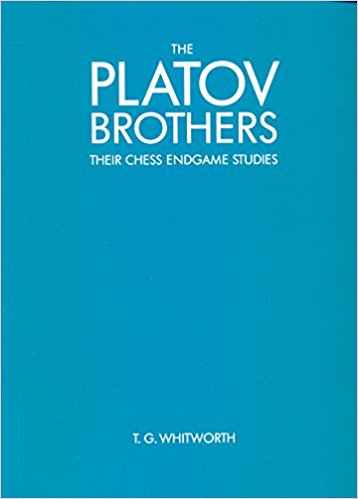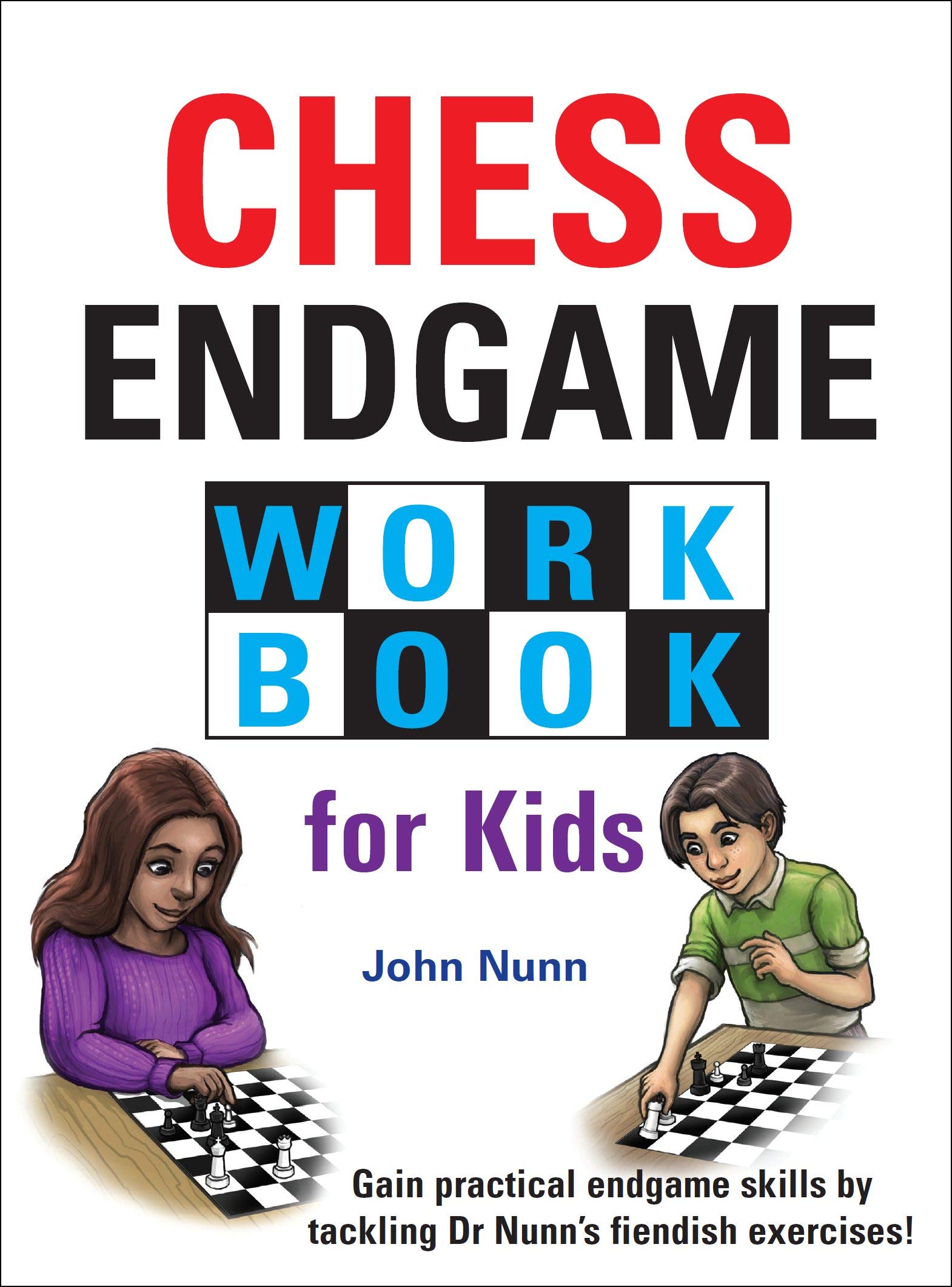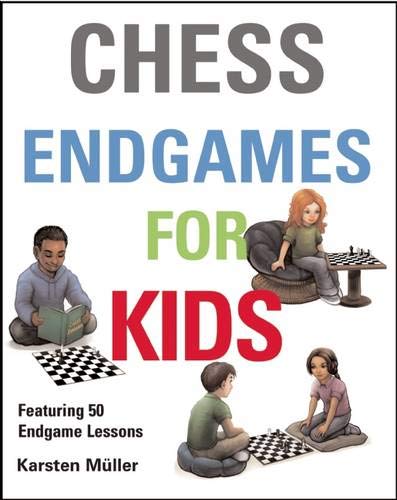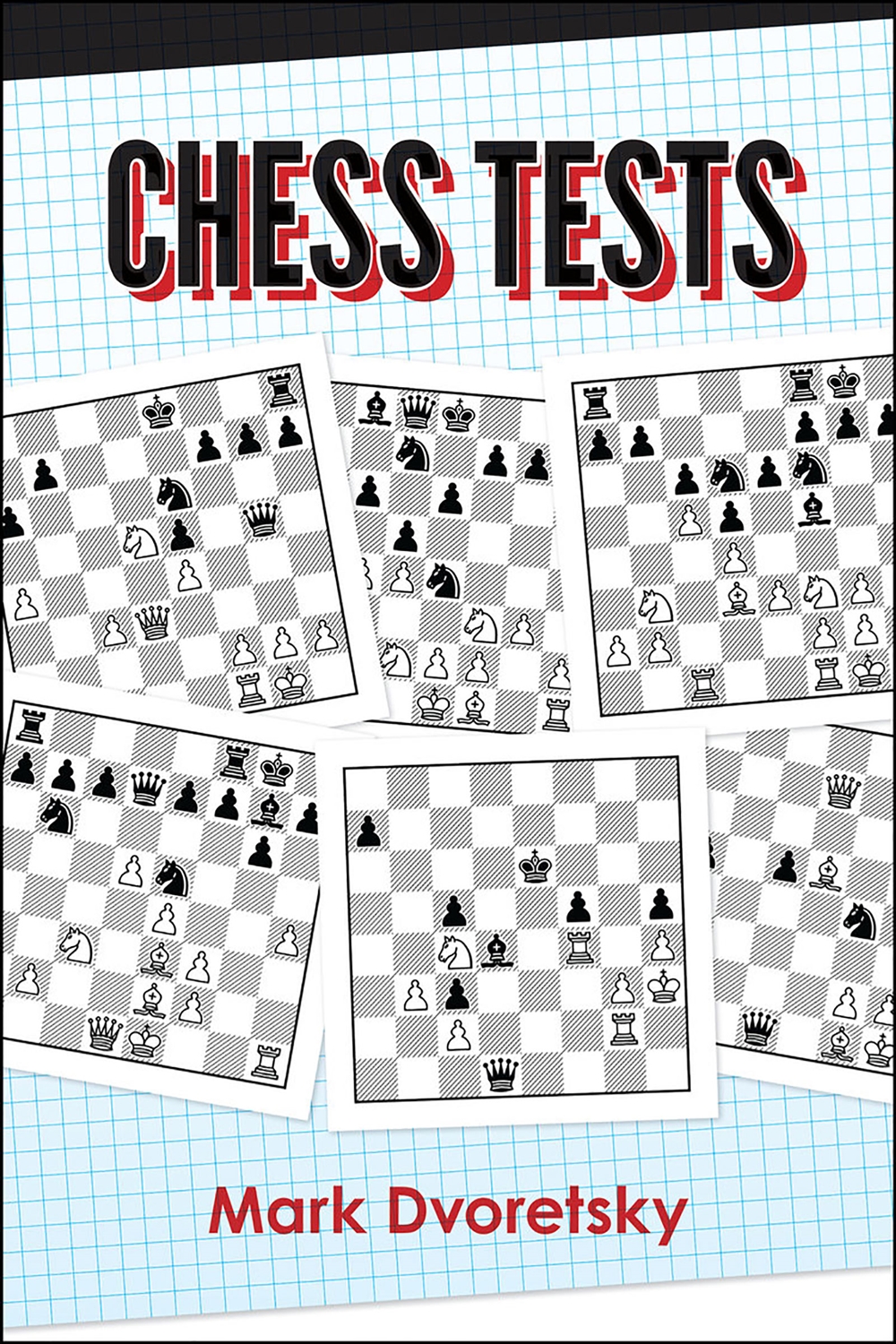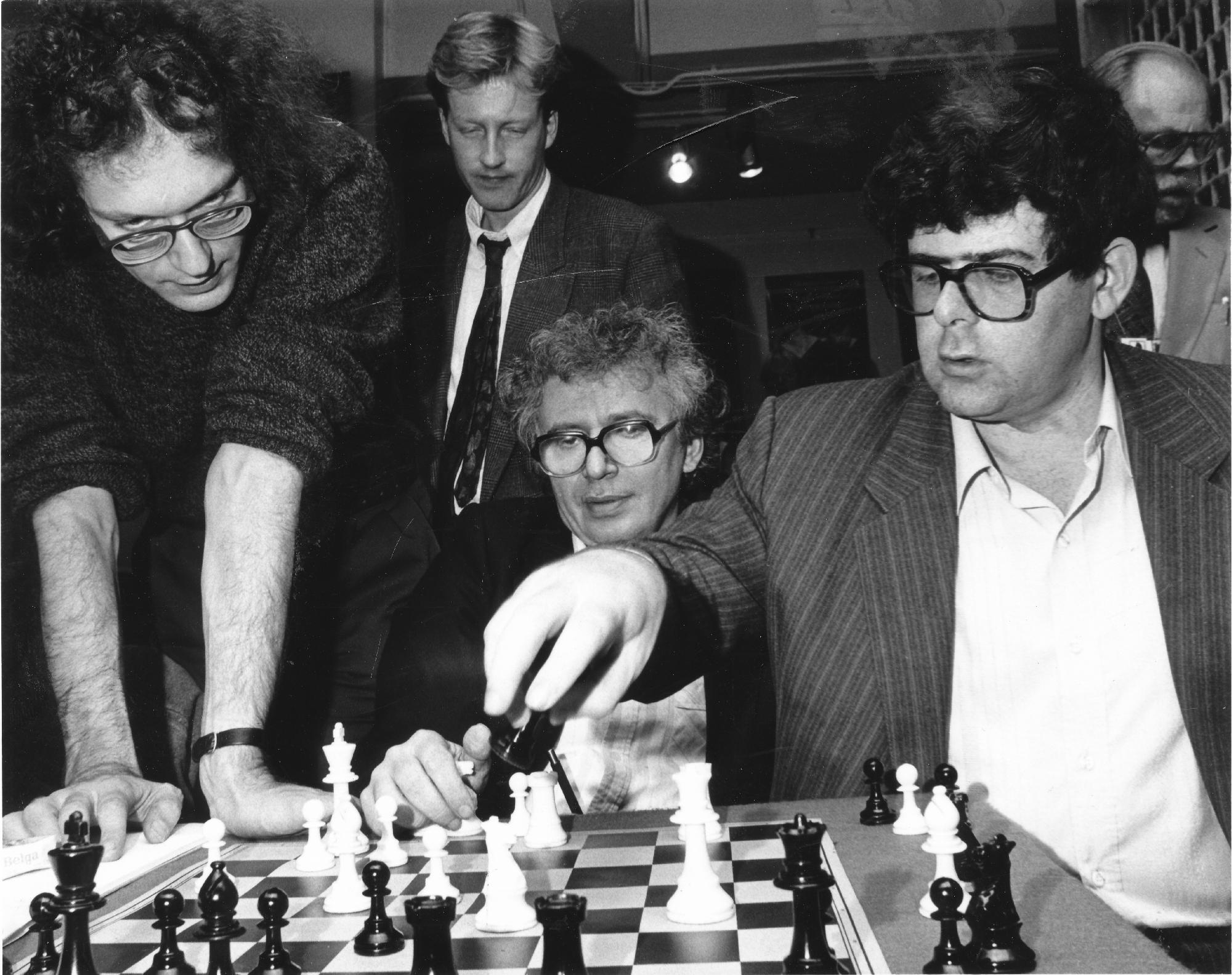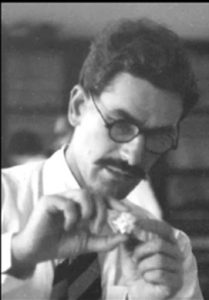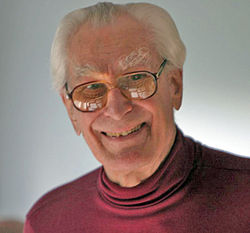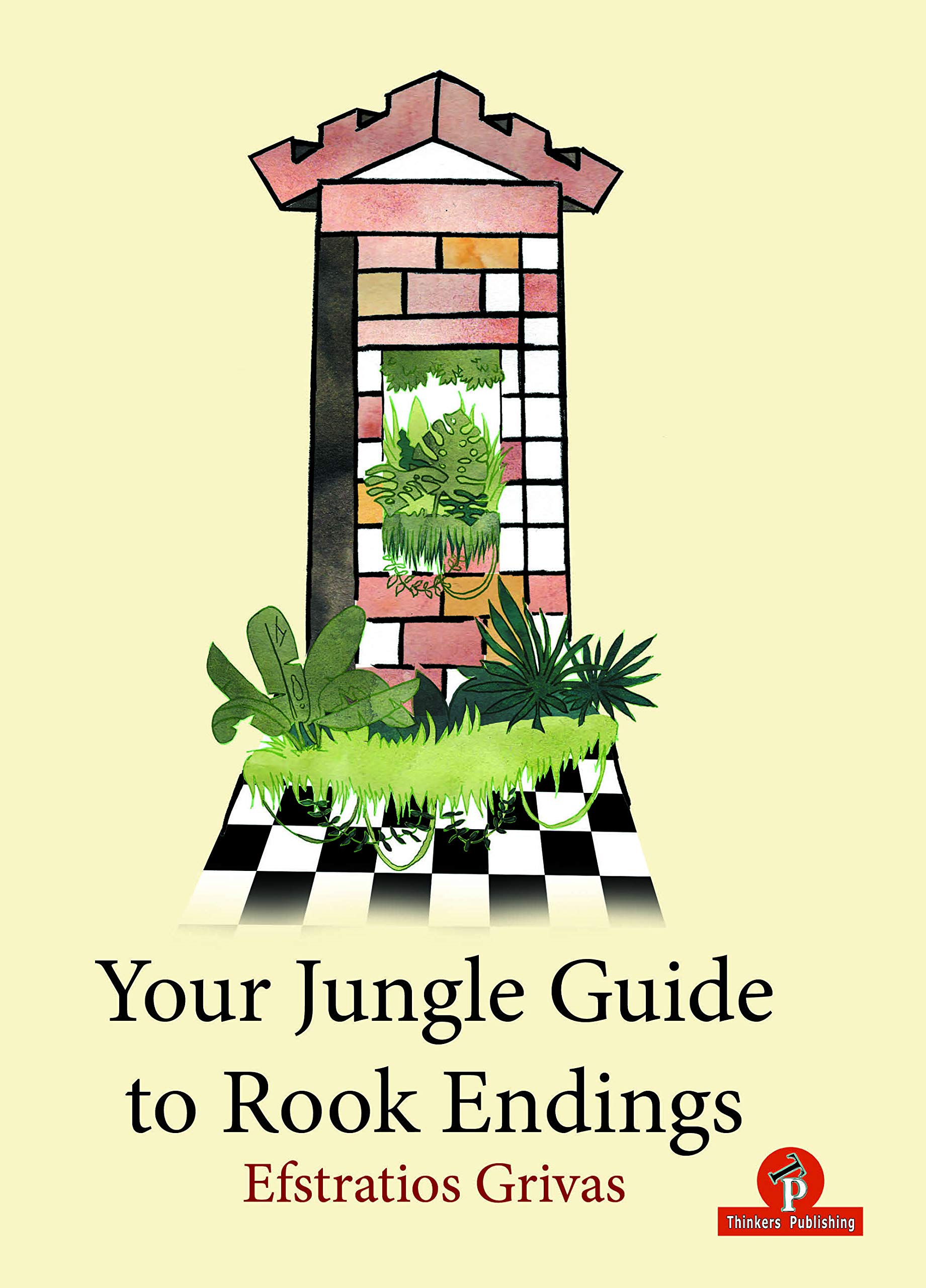
Your Jungle Guide to Rook Endings : Efstratios Grivas
“After a bad opening, there is hope for the middle game. After a bad middle game, there is hope for the endgame. But once you are in the endgame, the moment of truth has arrived.” – Edmar Mednis
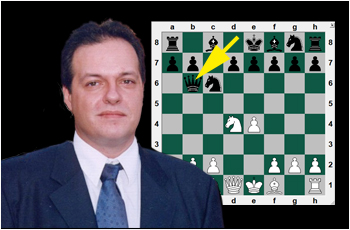
“Efstratios Grivas (30.03.1966) is a highly experienced chess trainer and chess author. He has been awarded by the International Chess Federation (FIDE) the titles of International Chess Grandmaster, FIDE Senior Trainer, International Chess Arbiter and International Chess Organiser.
His main successes over the board are the Silver Medal Olympiad 1998 (3rd Board), the Gold Medal European Team Championship 1989 (3rd Board) and the 4th Position World Junior Championship U.20 1985. He has also won 5 Balkan Medals (2 Gold – 1 Silver – 2 Bronze) and he was 3 times Winner of the International ‘Acropolis’ Tournament. He has also in his credit the 28 times first position in Greek Individual & Team Championships and he has won various international tournaments as well. He has been awarded five FIDE Medals in the Annual FIDE Awards (Winner of the FIDE Boleslavsky Medal 2009 & 2015 (best author) – Winner of the FIDE Euwe Medal 2011 & 2012 (best junior trainer) – Winner of the FIDE Razuvaev Medal 2014 (Trainers’ education) and has been a professional Lecturer at FIDE Seminars for Training & Certifying Trainers.
He has written more than 100 Books in Arabic, English, Greek, Italian, Spanish & Turkish. Since 2009 he is the Secretary of the FIDE Trainers’ Commission and since 2012 the Director of the FIDE Grivas Chess International Academy (Athens).”
From the rear cover :
“To learn and to play endgames well the chess player must love endgames’ – Lev Psakhis. Different kinds of endgames have specific characteristics and rules. Every serious player must know many typical positions and main principles of all types of endings. That knowledge should help us during the game, but it is not enough to become a good player, not yet. There just too many different endings, some of them with two or more pieces, some are very complex. To be comfortable and play well those complex endings require specific knowledge and specific ways of thinking. We will call it ‘endgame thinking’.
I chose to write a book on advanced rook endings as I simply did not wish to write another book that would be like the many already available. I have done my best to present analysis and articles I have written over the past 10-15 years. Th is work has been presented in my daily coaching sessions, seminars, workshops, etc. The material has helped a lot of trainees to develop into quite strong players gaining international titles and championships. Now, it is your turn to taste and enjoy it!”
As with every recent Thinkers Publishing publication high quality paper is used and the printing is clear. The book can easily be laid flat next to the board and does not require weights to prevent it from “self-closing” (a particular bugbear of ours !). Each diagram is clear and the instructional text is typeset in two column format, which, we find, enables the reader to maintain their place easily. Figurine algebraic notation is used throughout and the diagrams are placed adjacent to the relevant text and each diagram has a “to move” indicator.
This is a superb book packed full of instructive examples which I cannot praise enough. The book has clearly been extensively researched with Efstratios Grivas showcasing his credentials as a world class trainer.
The book starts off with four well thought out introductory sections: 1. The Endgame which briefly discusses the historical literature and computer evolution of the endgames. In this section, the author introduces his useful boxed SOS Tips which remind the reader of the salient points of a particular lesson or section.
2. The Golden Rules Of the Endgame which every player should know. I like the way that Grivas acknowledges other authors’ contributions to the evolution of our endgame understanding and this is clearly shown here and in Chapter 4 Extra Passed Pawn.
3. Rook Endgame Principles which lists the five main rules of rook endgames which is particularly useful for less experienced players.
4.Evaluation – Plan – Execution which discusses the role of planning followed by an excellent seven point SOS tip box.
Now we come to the meat of the book which is divided into nine chapters:
Chapter 1 – basic knowledge which covers the Lucena, Philidor and Vancura positions and their offshoots. If you only read one chapter of any book on rook endgames, I suggest this one.
Diagram 13 shows that even a future current world champion can blunder in a basic position:

This is a drawn ending as black’s king is on the short side and his rook has sufficient checking distance.
Aronian’s last move was the cunning waiting move 73.Rd7-d6!
The only drawing move here is 73… Kg6! for example, if 74.Rd7 Kg7 75.Kd6+ Kf6 76. e7 Kf7=
Carlsen replied with the “obvious” check 73… Ra7+ and resigned instantly after 74. Ke8. He resigned because of 74… Ra8+ 75.Rd8 Ra6 76.e7
The reviewer can say that he knew this trap from Levenfish & Smyslov and admits to feeling slightly smug!
Chapter 2 is entitled Extraordinary endings and covers three interesting and diverse areas:
- Rook and A + H pawns v Rook
- Rook vs 3 connected pawns
- 2 Rooks v R + 3 connected pawns
My preference would have been to restructure this chapter as Rook v Pawns and put the other two sections into later separate chapters. Nevertheless all the material is extremely useful. The ending of Rook v 3 pawns is fairly common and the diagram below shows a typical occurrence:
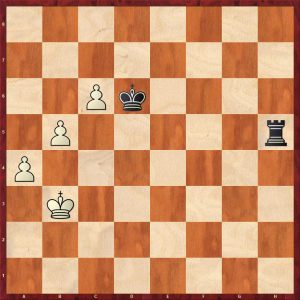
This is an “optimal drawn position” (Grivas). White must prevent the rook from getting behind the pawns which wins for black.
White played 68.Kb4? which loses, keeping the king on the second or third rank was fine. 68… Rh4+? (68…Rh3 or Rh1 wins) 69. Kb3 Kc5 70. Ka3! Kb6 71. Kb3 Kc5 72. Ka3! Rh3+ 73. Kb2 Kb6 74. Ka2! (only move) Ka5 75. Kb2 Rg3 76. Kc2? (76.Ka2! Kc4 77.c7 Ra3+ 78.Kb2 Rb3+ 79.Ka2 with a perpetual check) Rg4? (76…Kb4 wins 77.Kd2 Rg8! 78.Kd3 Kxa4 79. Kc4 Ka5 8-.Kc5 Rg5+ wins) 77. Kb3 Rb4+ 78. Kc3! Rb1 79. Kc2 Rf1 80. Kb3? (80.Kb2 draws) Ra1! winning
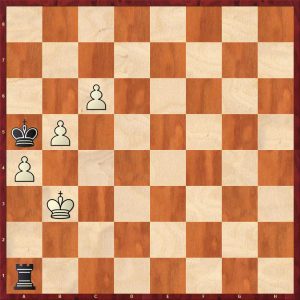
81.Kc4 Rxa4+ 82. Kc5 Ra1 83. c7 Rc1+ 84. Kd6 Kb6 0-1
Chapter 3 Same Side is one of the core chapters which deals with pawn up positions when all the pawns are on one side. These positions occur very frequently and are sometimes misplayed by world class players. I like the way the author systematically discusses the different structures with drawing and winning mechanisms and then shows pertintent examples from real games. Diagram 51 discusses the famous endgame Capablanca – Yates Hastings 1930 in great depth which shows that even the great Cuban player made several mistakes after achieving a winning game from a drawn 4 v 3 endgame shown below. A quick flavour of the coverage is given below.

The game continued 38…Rb4, 39.Ra5 Rc4 (39…h5! is the standard move to ease the defence.) 40.g4! squeezing, but black can still hold 40… h6 41. Kg3 Rc1 42. Kg2 Rc4 43. Rd5 Ra4 44. f4 Ra2+ 45. Kg3 Re2 46.Re5 Re1 47. Kf2 Rh1 48. Kg2 Re1 49. h4 Kf6?! (49…f6 is more precise reaching a known drawn position) 50.h5 Re2+ 51. Kf3 Re1 Re1 52. Ra5 Kg7 53. hxg6 Kxg6! (53…fxg6? loses 54. Ra7+ Kg8 55. e4 Rf1+ 56.Ke3 Rg1 57.f5! Rxg4 58.f6 winning with two passed pawns) 54. e4 Rf1+ 55.Kg3 Rg1+ 56. Kh3 Rf1 57. Rf5 reaching the diagram below:
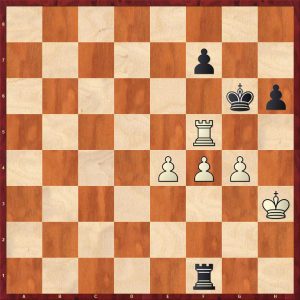
57… Re1? (black must play 57…f6 to draw) 58. e5! Re3+ 59.Kg2! Ra3 60.Rf6+ Kg7 reaching a well lnown won position 61. Rb6? (61.Rd6 wins protecting the king from side checks) Re3? 61…Ra4! leads to a complex draw 62. Rb4? (62. Rb1 still wins but Rb8 does not win) Rc3 reaching the position below:
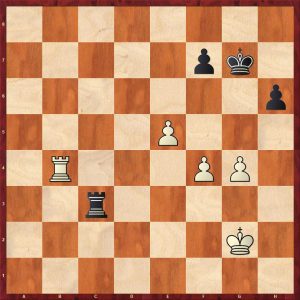
63. Kf2? (A shocking mistake, 63.Rb8 intending f5 wins) 62… Ra3 ? (63…h5! draws) 64. Rb7 Kg8 65. Rb8+! (now Capablanca wins efficiently) Kg7 66. f5 Ra2+ 67. Ke3 Ra3+ 68. Ke4 Ra4+ 69. Kd5! Ra4+ 69. Kd5! Ra5+ 70. Kd6 Ra6+ 71. Kc7 Kh7 72.Kd7 Ra7+ 73. Kd6 Kg7 74. Rd8! Ra5 75. f6+ Kh7 76. Rf8 Ra7 77. Kc6! Kg6 78. Rg8+ Kh7 79. Rg7+ Kh8 80.Kb6 Rd7 81. Kc5! Rc7+ 82. Kd6 Ra7 83.e6! Ra6+ 84. Ke7 Rxe6+ 85. Kxf7 Re5 86.g5! hxg5 77. Kg6 1-0
Chpater 4 Extra Passed Pawn is the second core chapter of the book and is easily the longest and most complex chapter. Despite this, detailed study of this section will reap rich rewards. The theory of these endings has evolved significantly since the books by Fine and Levenfish/Smyslov. Diagram 78 shows a typical position with a extra rook’s pawn with the stronger side having the rook in front of the pawn. This position looks to be an easy draw but beware: it is a draw but the position is complex and the drawing lines are complex! One slip and the game slips away.
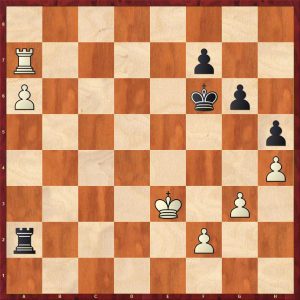
Black played a waiting move which is fatal 59…Ke6? (59…Ra4! or 59…g5! draws) White blundered in turn playing 60.Ra8? ( White could have won with a beautiful and instructive variation starting with 60. Kd4! see diagram below):
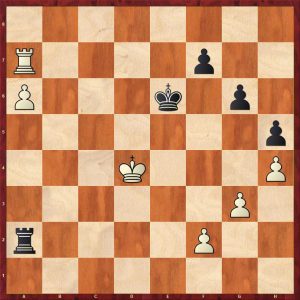
60…Rxf2 (looks as though it draws, but it does not) 61. Rc7 Ra2 62. a7 Kf5 63. Kc4!! Kg4 64. Kb3! Ra6 65. Rc4+ Kxg3 66. Ra4 Rxa7 67. Rxa7 Kxh4 reaching a key position shown below:
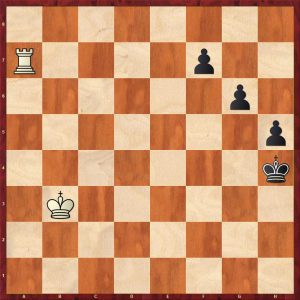
White wins with the amazing 68. Kc3!! (68.Rxf7 only draws 68…Kg3 holds) 68…Kg3 (68…f5 69. Kd3 g5 70.Rf7 f4 71.Rf5!! Kg4 72. Ra5 h4 73. Ke2 wins) 69. Kd3 h4 70. Ke2! wins
After 60. Ra8 the game was eventually won by white after many errors by both sides.
Chapter 5 Shattering covers endings where one side has a positional advantage consisting of the better pawn structure. A typical position is diagram 118 which is from the famous game Flohr – Vidmar Nottingham 1936.
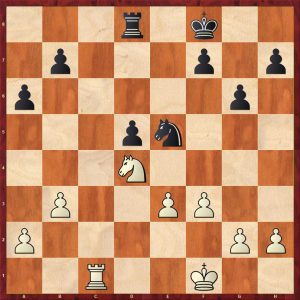
Black rather injudiciously exchanged knights with 29…Nc6? 30. Nxc6 Rc8 31. Rc5? (better is 31.Ke2 bxc6 (31…Rxc6 loses the king and pawn ending after 32.Rxc6 bxc6 33.b4!) 32.Rc5) 31…bxc6? (31…Rxc6! 32. Rxd5 Rc2 probably draws) 32. Ke2! Ke7 33.Kd3 Kd6 34. Ra5! Ra8 35. Kd4 f5 36. b4 reaching the position below:

36…Rb8? and Flohr won a brilliant ending. However as Grivas shows, black could have drawn by executing a better plan on move 36 by defending his weak a6 pawn with his king 36…Kc7! 37. Kc5 Kb7 38. Kd6 Re8 39.Ra3 g5! for example 40.Rc3 f4! 41. exf4 gxf4 42. Rxc6 Rd8+ 43. Kc5 d4 44. Re6 d3 45. Re1 Rg8=
Chapter 6 Isolani covers the handling of rook endings playing against isolated central pawns. Diagram 132 covers the game Szabo Penrose from the European Team Championship in Bath 1973.
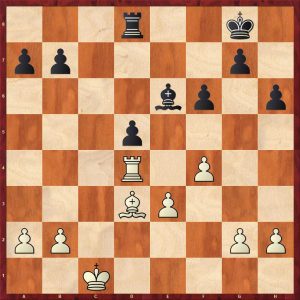
This is a superbly handled ending by Szabo who probes carefully and forces resignation within twenty moves – a textbook example with excellent notes by the author.
Chapter 7 Drawn Endings covers the reasons for losing drawn positions which happens to very strong players. An excellent example is diagram 140.

It is hard to believe that a world class player of Gelfand’s standard could lose such a position but Grivas shows how with his usual exemplary commentary.
Chapter 8 Four Rooks is one of the chapters that makes this book stand out – few authors have covered this topic in any depth although Fine in BCE does give some examples. Grivas starts the chapter with five sets of educational SOS tips which the reviewer really likes. Diagram 143 shows a example of good defence in a position that looks diffcult with black’s king trapped on the back rank:
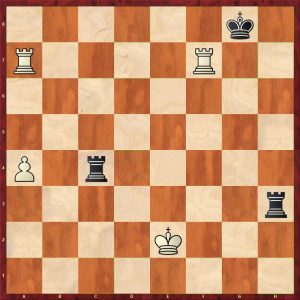
The author conducts an almost flawless defence to hold this difficult position – buy the book to find out how.
The final chapter 9 Various Concepts discusses Lasker’s steps, trapped rooks and the Loman move. If you don’t know about Lasker’s steps or the Loman move – buy the book to learn more!
FM Richard Webb, Chineham, Hampshire, 20th July 2020

Book Details :
- Paperback : 400 pages
- Publisher: Thinkers Publishing; 01 edition (19 May 2020)
- Language: English
- ISBN-10: 949251074X
- ISBN-13: 978-9492510747
- Product Dimensions: 16.5 x 1.9 x 22.9 cm
Official web site of Thinkers Publishing

Web results
Your Jungle Guide to Rook Endings

